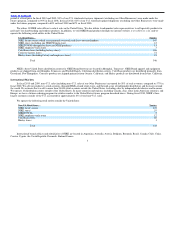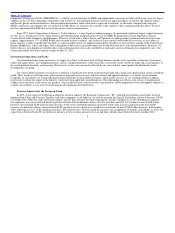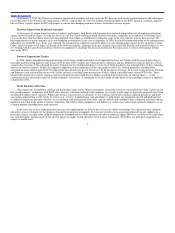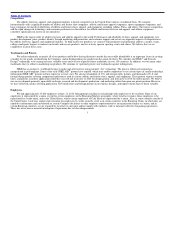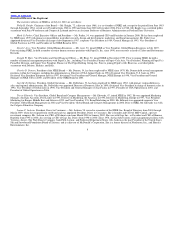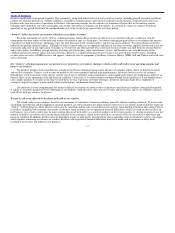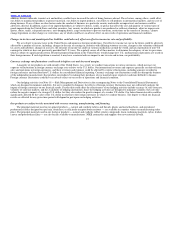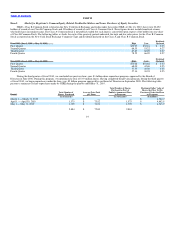Nike 2010 Annual Report Download - page 14
Download and view the complete annual report
Please find page 14 of the 2010 Nike annual report below. You can navigate through the pages in the report by either clicking on the pages listed below, or by using the keyword search tool below to find specific information within the annual report.
Table of Contents
athletic and leisure footwear and apparel, and athletic equipment, constitute significant risk factors in our operations. If we do not adequately and timely
anticipate and respond to our competitors, our costs may increase or the consumer demand for our products may decline significantly.
If we are unable to anticipate consumer preferences and develop new products, we may not be able to maintain or increase our net revenues and profits.
Our success depends on our ability to identify, originate and define product trends as well as to anticipate, gauge and react to changing consumer
demands in a timely manner. All of our products are subject to changing consumer preferences that cannot be predicted with certainty. Our new products
may not receive consumer acceptance as consumer preferences could shift rapidly to different types of performance or other sports apparel or away from
these types of products altogether, and our future success depends in part on our ability to anticipate and respond to these changes. If we fail to anticipate
accurately and respond to trends and shifts in consumer preferences by adjusting the mix of existing product offerings, developing new products, designs,
styles and categories, and influencing sports and fitness preferences through aggressive marketing, we could experience lower sales, excess inventories and
lower profit margins, any of which could have an adverse effect on our results of operations and financial condition.
We rely on technical innovation and high quality products to compete in the market for our products.
Although design and aesthetics of our products appear to be the most important factor for consumer acceptance of our products, technical innovation
and quality control in the design of footwear, apparel, and athletic equipment is also essential to the commercial success of our products. Research and
development plays a key role in technical innovation. We rely upon specialists in the fields of biomechanics, exercise physiology, engineering, industrial
design and related fields, as well as research committees and advisory boards made up of athletes, coaches, trainers, equipment managers, orthopedists,
podiatrists, and other experts to develop and test cutting edge performance products. While we strive to produce products that help to reduce injury, enhance
athletic performance and maximize comfort, if we fail to introduce technical innovation in our products consumer demand for our products could decline,
and if we experience problems with the quality of our products, we may incur substantial expense to remedy the problems.
Failure to continue to obtain high quality endorsers of our products could harm our business.
We establish relationships with professional athletes, sports teams and leagues to evaluate, promote, and establish product authenticity with
consumers. If certain endorsers were to stop using our products contrary to their endorsement agreements, our business could be adversely affected. In
addition, actions taken by athletes, teams or leagues associated with our products that harm the reputations of those athletes, teams or leagues could also
harm our brand image with consumers and, as a result, could have an adverse effect on our sales and financial condition. In addition, poor performance by
our endorsers, a failure to continue to correctly identify promising athletes to use and endorse our products, or a failure to enter into cost effective
endorsement arrangements with prominent athletes and sports organizations could adversely affect our brand and result in decreased sales of our products.
Failure of our contractors or our licensees’ contractors to comply with our code of conduct, local laws, and other standards could harm our business.
We contract with hundreds of contractors outside of the United States to manufacture our products, and we also have license agreements that permit
unaffiliated parties to manufacture or contract to manufacture products using our trademarks. We impose, and require our licensees to impose, on those
contractors a code of conduct and other environmental, health, and safety standards for the benefit of workers. However, from time to time contractors may
not comply with such standards or applicable local law or our licensees may not require their contractors to comply with such standards or applicable local
law. Significant or continuing noncompliance with such standards and laws by one or more contractors could harm our reputation and, as a result, could
have an adverse effect on our sales and financial condition.
11




